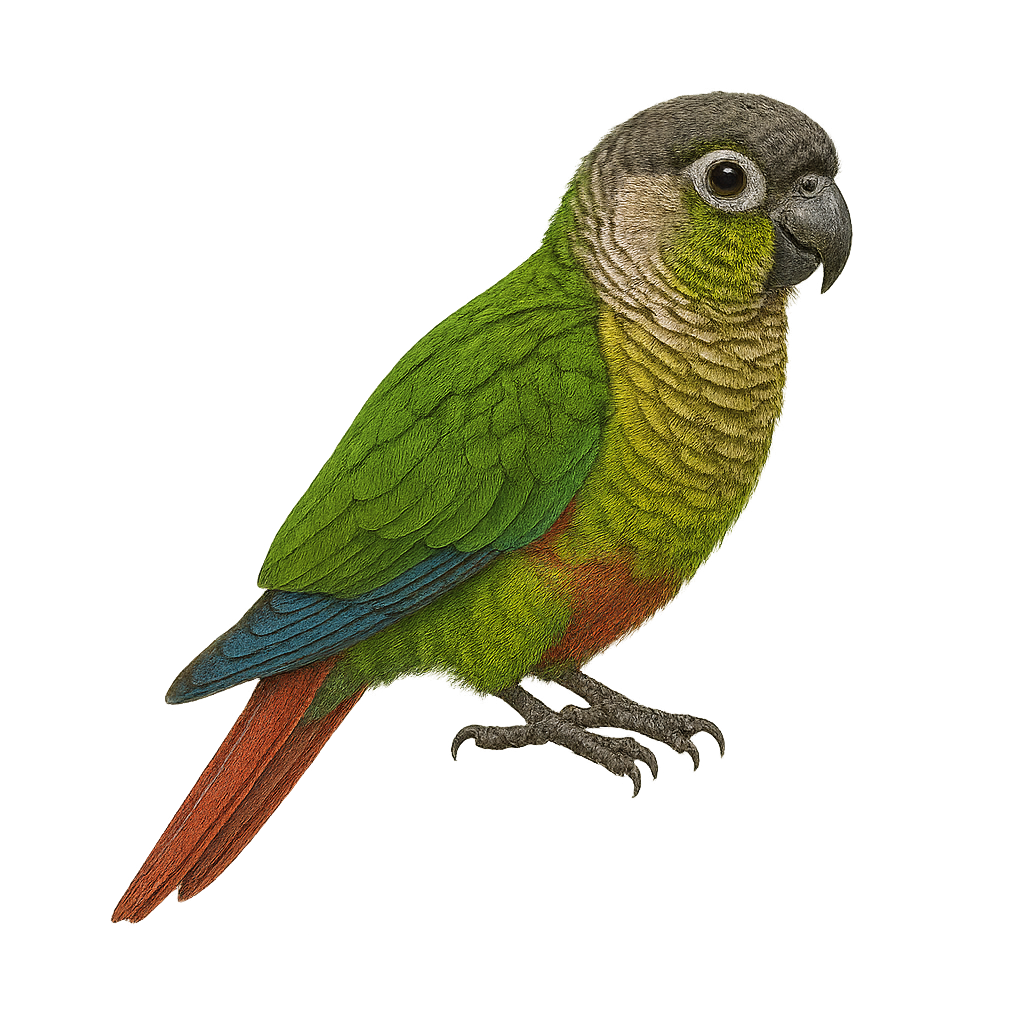Your wildlife photography guide.
Explore the green-cheeked parakeet in detail, study its behavior, prepare your shots.
Where to observe and photograph the green-cheeked parakeet in the wild
Learn where and when to spot the green-cheeked parakeet in the wild, how to identify the species based on distinctive features, and what natural environments it inhabits. The WildlifePhotographer app offers tailored photography tips that reflect the green-cheeked parakeet’s behavior, helping you capture better wildlife images. Explore the full species profile for key information including description, habitat, active periods, and approach techniques.
Green-cheeked Parakeet
Scientific name: Pyrrhura molinae

IUCN Status: Least Concern
Family: PSITTACIDAE
Group: Birds
Sensitivity to human approach: Tolerant
Minimum approach distance: 5 m
Courtship display: October to November
Incubation: 22-25 jours
Hatchings: October to December
Habitat:
Tropical forests, savannas, wetlands
Activity period :
Primarily active during the day, with peak activity in the morning and late afternoon.
Identification and description:
The Green-cheeked Parakeet, or Pyrrhura molinae, is a small parrot native to South America, particularly the tropical forests of Brazil, Bolivia, and Argentina. It is recognizable by its bright green plumage, green cheeks, and reddish tail. Measuring about 26 cm in length, it is appreciated for its curious and sociable personality. It lives in groups and primarily feeds on fruits, seeds, and flowers. In captivity, it is often chosen as a pet due to its playful and affectionate nature. Although it can be noisy, it is generally less vocal than other parrots.
Recommended lens:
400 mm – adjust based on distance, desired framing (portrait or habitat), and approach conditions.
Photography tips:
To photograph the Green-cheeked Parakeet, choose early morning hours when the light is soft. Use a 400mm or longer telephoto lens to capture details without disturbing the bird. Be patient and discreet, as although it is tolerant, it may fly away if it feels threatened. Look for natural perches where it likes to rest, such as tree branches. Consider using a tripod to stabilize your camera and achieve sharp images.
The WildlifePhotographer App is coming soon!
Be the first to explore the best nature spots, track rutting seasons, log your observations, and observe more wildlife.
Already 1 430 wildlife lovers subscribed worldwide

